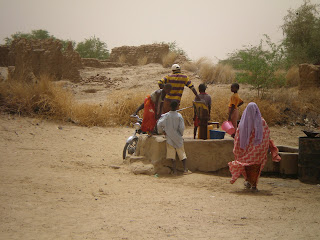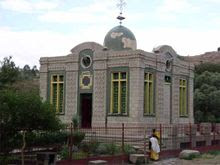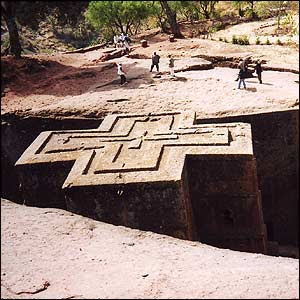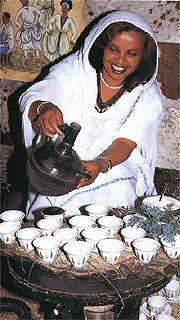

I bet you thought Timbuktu was an imaginary city. I bet your mom used to say that she would banish you to Timbuktu if you didn't finish your plate of broccoli (in my case, my plate of endives).
Well I think I would rather eat a mixed plate of endives and broccoli, than to be banished to Timbuktu.The view from the airplane is uniform: there is sand as far as your eye can see, speckled with scrawny, misshapen, greyish green trees. I catch a glimpse of a skinny road that just goes and goes and goes.Timbuktu is probably the hottest place on earth to which you'll ever go (unless you choose to live in a volcano, and I wouldn't recommend that either).
I walked off the plane in mid day, after a difficult landing, straight into the Timbuktu sun. It is as if I had opened an oven door and walk straight in. I'm not sure how hot it really is, but inside our hotel, it's exactly 100 degrees. The atmosphere is dry though, so as soon as I take cover in the shade, the heat is bearable. February and March are the hottest months here, and a colleague says that that's when the heat becomes unbearable. I just cannot imagine how it can get hotter than this.
The dwellings are made from mud briks, and look like squarish replicas of mosques. The construction material dispenses the heat a lot better than cement or iron. The poorest people live under straw tents that are about waist-high, and rounded off like overturned cereal bowls. I see a pack of 3 of the skinniest cows I hope to ever see again. They look miniatured, and are leather and hair stretched over jutting skeletons. It's a wonder their scrawny necks can support their heads.



As we go from site to site for work, I conserve my energy by walking slowly, and making few movements. I walk in the sandy stretches from the car to the shade with a light cotton Ethiopian scarf, which has the advantage of shielding my neck and chest, and covering my head from the heat. It also gives me an air of extra piety, which helps as I walk through this predominently Muslim city.
We see a famous mosque there, made of sand and mud, and protuding pieces of wood from its main minaret, like some elaborate African hairstyle. The interior is dark and cool, with a chalk board announcing the next prayer time... (to be continued)
Note: though I never did finish this post, here are some additional photos taken by a fellow traveler...

Beautiful, intrincate, carved doors in the old city.

Tight living quarters as we get to the Ammam's place

A craftman shows me how he pounds metallic designs in hard wood.




